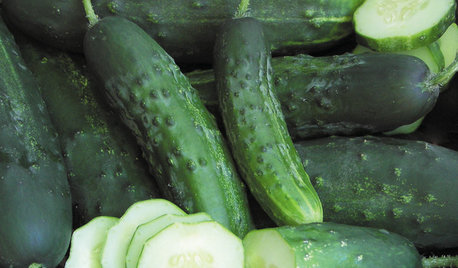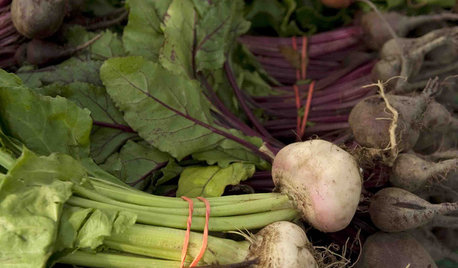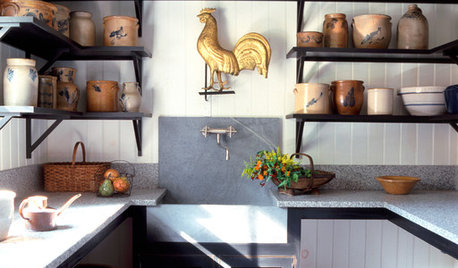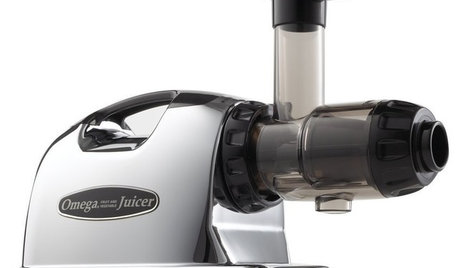Fermenting cukes for pickles
John__ShowMe__USA
16 years ago
Related Stories

SUMMER FRUITS AND VEGETABLESSummer Crops: How to Grow Cucumbers
Pick a peck for pickles or opt for fewer and raw — no matter how you slice them, cucumbers are great for summer gardens small to large
Full Story
FARM YOUR YARDIf You Have Room for Only One Summer Crop ...
Get an edible that’s long on flavor even if you’re short on space, with a long-time gardener’s favorite picks
Full Story
MOST POPULARHow to Get Rid of Those Pesky Summer Fruit Flies
Learn what fruit flies are, how to prevent them and how to get rid of them in your home
Full Story
FARM YOUR YARDCool-Season Vegetables: How to Grow Beets
Give canned versions of this fall and spring garden favorite the heave-ho and discover its true flavor and colors
Full Story
ACCESSORIESStoneware Crocks Strike a Chord
Once just humble pantry items, stoneware containers have become showpieces around the home
Full Story
FARM YOUR YARDHouzz Call: Home Farmers, Show Us Your Edible Gardens
We want to see where your tomatoes, summer squashes and beautiful berries are growing this summer
Full Story
PRODUCT PICKSGuest Picks: Get Juicing
Stay hydrated and healthy with these tools and accessories for juicing fruits and vegetables right at home
Full Story
MONTHLY HOME CHECKLISTSSeptember Checklist for a Smooth-Running Home
Get ready to get cozy at home with snuggly blankets, well-stocked firewood, added insulation and more
Full StoryMore Discussions







kayskats
John__ShowMe__USAOriginal Author
Related Professionals
Derry Landscape Architects & Landscape Designers · Simpsonville Landscape Architects & Landscape Designers · Middletown Landscape Contractors · Stoughton Landscape Contractors · Edmond Landscape Contractors · Edmond Landscape Contractors · Bergenfield Landscape Contractors · Fridley Landscape Contractors · Harrisburg Landscape Contractors · Lehigh Acres Landscape Contractors · New Berlin Landscape Contractors · Shoreview Landscape Contractors · West Allis Landscape Contractors · The Colony Roofing & Gutters · Colonia Roofing & Gutterskayskats
John__ShowMe__USAOriginal Author
kayskats
John__ShowMe__USAOriginal Author
kayskats
John__ShowMe__USAOriginal Author
kayskats
kayskats
John__ShowMe__USAOriginal Author
readinglady
kayskats
John__ShowMe__USAOriginal Author
kayskats
John__ShowMe__USAOriginal Author